|
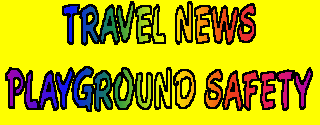
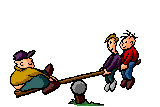
Scroll the page to view information and also see links noted
below:
Consumer Product Safety Commission Report Pressure Treated
Wood used in Playgrounds has Tips for Parents to reduce the Risk of Exposure to
Arsenic In a release detailing a report prepared by CPSC
staff with respect to pressure treated wood used in playgrounds it was revealed
that there is an increased risk to children due to exposure to arsenic residue
on children's hands followed by hand-to-mouth contact. The report says transfer
of the arsenic from the hand to the mouth can occur during and after playing on
pressure-treated wood playground equipment.
To minimize the risk of exposure to arsenic from CCA-treated playground
equipment, the staff recommends that parents and caregivers thoroughly wash
children's hands with soap and water immediately after playing on CCA
pressure-treated wood playground equipment. In addition, the staff recommends
that children not eat while on CCA-treated wood playground equipment.
Arsenic occurs naturally in the air, soil, water, and in some foods. While
exposure to arsenic from background sources could be much higher than the
exposure from playgrounds for some children, exposure to arsenic from CCA-treated
playgrounds could be a significant source of arsenic for other children on those
days that include a playground visit.
Several playground companies have already begun to use wood treated with
arsenic-free preservatives. In addition, playground structures can be made of
other materials that don't contain arsenic, such as naturally rot-resistant wood
(redwood and cedar), metal, plastic, and composite materials. All of these
materials could be used for new construction.
The following article was posted on May 13, 2000 and is from the National
Safety Coalition at www.nsc.org
By Elizabeth Agnvall
When 6-year-old Mckenzie Doren
came home from school in Sand Lake, Mich., one day last October, her mother
wondered why she had a plastic baggie around her arm. "I fell off the
monkey bars, but the nurse said it was OK," Mckenzie told her mother.
Melinda Doren realized that her daughter couldn't use her arm. A visit to the
emergency room revealed that Mckenzie's arm was broken.
Doren had complained for years to the school's principals that the playground
was poorly maintained, but now she began to research the details of playground
safety. She found that the school's playground had outdated equipment as well as
ladder rungs that were a hanging hazard.
"It's scary to think that my kids played on that for years," Doren
says. Each year over 200,000 children visit hospital emergency rooms because of
playground injuries, according to the U.S. Consumer Product Safety Commission.
Approximately 15 children die each year because of playground injuries.
A recent study by the National Program for Playground Safety gave America's
playgrounds a disappointing C- grade. Only New Mexico, Maryland and Delaware got
above a C. No states warranted an A. "We didn't find any playgrounds
without problems," says Donna Thompson, Ph.D., director of the NPPS.
"We hope that people care enough about their children to make a difference
in their playgrounds."
Many playground injuries can be prevented. Use this guide to examine your
children's playground so that they can run, jump, swing and slide to their
heart's content -- safely.
Soft surface
Because nearly 70 percent of playground injuries are caused by falls to the
ground, John Preston, chief engineer for children's products with the CPSC, says
improper surfacing is the first thing parents should watch for when they inspect
a playground. Wood chips, bark mulch, wood fibers, sand, pea gravel, shredded
tires and rubber mats cushion falls well. Avoid concrete, grass and dirt --
they're too hard. Preston recommends a minimum depth of 12 inches of material
surrounding each piece of equipment in a 6-foot fall zone. And regular
maintenance is also crucial. "If not daily, then at least monthly,"
Preston says.
Swinging swings
Swings are the pieces of moving equipment that are most likely to cause injuries
to children. Preston says that animal swings have caused several deaths and
should be removed from playgrounds. Metal or wooden seats should be replaced
with soft seats. Swings should be set far enough away from other equipment so
that children won't be hit by a moving swing. Only two swings should be in each
supporting framework, and they should be at least 24 inches apart. The CPSC
recommends full-bucket seats for younger children. Half-bucket seats are
dangerous because babies and toddlers can slide out of them.
Smooth sliding
According to Fran Wallach, a certified playground inspector and a board member
of the National Playground Safety Institute, one of the greatest dangers with
slides occurs when drawstrings on children's clothes get caught at the top of
the slide. Although most children's clothing manufacturers have quit making
drawstrings, many children have older clothes. There should be no gaps between
the slide itself and the platform. Wallach adds that slides should be
well-anchored, have firm handrails and good traction on the steps. There should
also be a bar at the top of the slide so that children have to sit before they
go down.
Safe seesaws and merry-go-rounds
Wallach says spring-loaded seesaws are best for young children. Avoid adjustable
seesaws with chains because children can crush their hands under the chains. A
traditional-type seesaw should have a tire or some other object under the seat
to keep it from hitting the ground. Merry-go-rounds or "whirls" are
best for school-age children. They should have good hand grips, and the rotating
platform should be level, free of sharp edges and have adequate clearance to
prevent crushing or severing limbs.
Climb carefully
According to the NPPS, 40 percent of all playground injuries are related to
climbing equipment. More children are injured falling off climbing equipment or
horizontal ladders than anything else on the playground. Children under 4
shouldn't play on this equipment. However, climbers are great for encouraging
upper body strength. Watch older children when they're climbing, check that
steps and handrails are in good condition, and make sure a guardrail or barrier
surrounds raised platforms. Any climbing ropes should be secured at the top and
bottom. Because of the risk of injury, the CPSC recommends that monkey bars be
removed from all playgrounds.
Playgrounds for all children
The American Disabilities Act requires that new playgrounds make appropriate
accommodations for disabled children. "The most important issue is how the
children get into the space," says Jean Schappet, design director for
Boundless Playgrounds, an organization that helps build accessible playgrounds
nationwide. The ADA requires a 60-inch pathway that is firm, stable and
slip-resistant. Rubber tiles and matting are good for accessibility, while
loose-fill material like sand and wood chips are not. Schappet says an easy fix
for a playground is to add an adaptive swing, but ideally much more can be done.
"It's important to provide diverse and stimulating play experiences for
children of all abilities," Schappet says.
Improve your playground
If your child's playground is unsafe, report problems to the owner/operator.
There are no national mandatory standards for playground equipment, but Texas,
California, New Jersey, Michigan and North Carolina have laws that require
playgrounds to follow standards of the American Society for Testing and
Materials. Some states require playgrounds to follow standards set in the CPSC's
Handbook for Public Playground Safety. However, many schools and communities
don't have the funds to make necessary changes.
Click here to view Playground
Safety Tips from Hotel Fun 4 Kids
|
To view Playground Safety Tips Click Below:
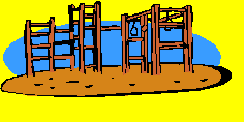
See the following sections for other travel news about
safety:
First Aid Safety Tips for Managing an
Emergency Click Below:

For Playground Safety News Click Below:
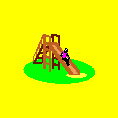
For Balloon Safety Click Below:

For Beach/Pool Safety News Click Below:
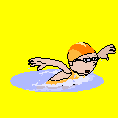
For Crayon Safety Click Below:

For Car Safety News Click Below:
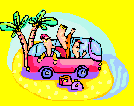
For Bike and Bike Helmet Safety News Click Below:
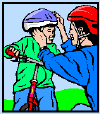
For Crib Safety News Click Below:

For Airplane Safety Click Below:

For Helmets for Skiers and Snowboarders,
Click Below:

For Skiing Safety Click Below:
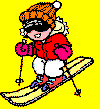
For Safety News for Children's Clothing Click Below:
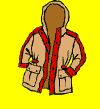
For Scooter Safety News Click Below:

Back to
Travel Safety News |